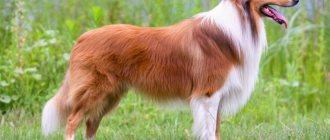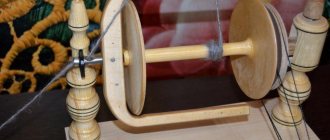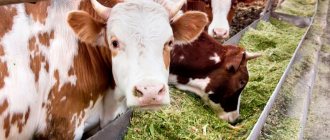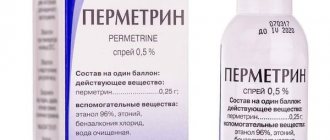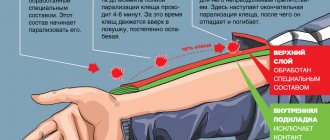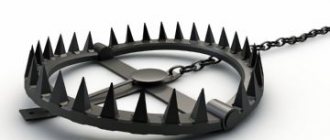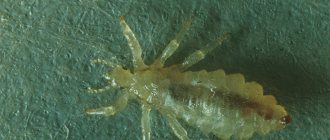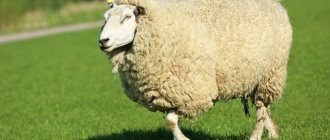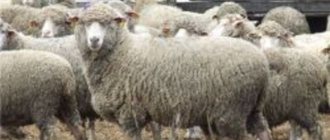"Virginia wool" is a general name for quality wool. In its production, pure primary raw materials are used. Wool is collected from merino fine-wool sheep. When the molting period begins, the animals are cut or combed. Clean, combed strands are used to make yarn, outerwear, knitwear, and home textiles.
"Virgin" wool and "recycling"
To understand what kind of fabric Virginia wool is, you need to delve a little deeper into the terminology. The name “Virginian” itself comes from the English “virgin”. Translated, this word means “virgin, first, primary, pure.”
Virgin wool is a fabric, yarn or fiber made from virgin wool that has not been processed.
After shearing the sheep, the raw material is immediately used to make a product. The opposite of virgin wool is “recycled” or “recovered” wool. This mark means that the item is made from recycled materials. That is, once the wool has already been felted and woven into the product. It was subsequently reworked and a new thread was made.
Recycled material is less wear-resistant, rough and resembles cotton wool. To be fair, it is not inferior in warmth to new fiber, but costs much less.
Name confusion
To keep the item warm, in the classic version it is made of wool. Therefore, many first of all pay attention to the label and look for the treasured “wool”, which is translated from English as “wool”. As we have already found out, “virgin” is “primary”.
However, “virgin wool” is not the only name for Virginia wool. Products made from it may have different markings:
- lana vergine (Italian name);
- new wool (the term “virgin” has been changed to “new” - “new”);
- pure virgin wool (“pure” translates as “pure”);
- 100% lana vergine (means that the material is made without synthetic or other additives);
- virgin merino wool (“unprocessed fine wool from Merino sheep”).
Certified wool fabrics are considered to be of the highest quality. Signs indicate this:
- Responsible Wool Standard (RWS) is an independent organization that certifies wool products. To obtain certification, a manufacturer must use approved production technologies.
- Woolmark is a large wool manufacturer offering certification services to growing companies. The criteria for obtaining the certificate are the same as for RWS.
When using organic technologies, manufacturers can also qualify for USDA Organic and Global Organic Textile Standard (GOTS) certifications.
How to choose the right breed
When choosing a breed for obtaining raw wool, the cut from the individual and the quality of the resulting fleece are taken into account. Traditionally, fiber from fine-fleece and semi-fine-fleece sheep is in high demand on the market. How much can you get per year from an animal:
See also
Description and characteristics of sheep of the Karachay breed, maintenance rulesRead
| Breed | Annual cut in kilograms |
| Lincoln | 6-10 |
| Merino Soviet Australian Altaic Ascanian | 8-12 5-10 10-12 7-16 |
| Mazaevskaya | 6-12 |
| Novokavkazskaya | 6-9 |
| Kuibyshevskaya | 5-6 |
| Karakulskaya | 3.5-5 |
| Romney March | 8-9 |
The fleece of long-haired breeds is in demand on the market; the fibers have shine and high wear resistance. Russian Longhair and Lincoln are prized for their soft, curly hair. Lincoln sheep love cool weather and grow well only under certain conditions. The yield of cleaned fleece is 55-60% of the weight of the fleece.
Russian longhairs are less capricious in grooming. They are distinguished by good health, unpretentious, and produce 3.5-6.5 kilograms of high-quality wool.
You can get high-quality fleece from sheep of the Romney-Marsh, Kuibyshev, and Tien Shan breeds. Sheep of hybrid species are distinguished by endurance, high-quality thin wool, and undemanding food. Tien Shan sheep can feed on pasture all year round in warm regions.
Description of material
Virginia wool is a very soft, light and warm material. The villi have characteristic corkscrew curls. If you look at them through a magnifying glass, you will notice their silkiness and shine. The length of the fibers is 6-10 cm. The fabric made from them is non-prickly and pleasant to the touch.
Woolen threads with virgin wool are used primarily to create luxurious winter items:
- light and thin, but at the same time incredibly warm coat;
- beautiful sweaters, cardigans;
- hats, scarves, snoods and mittens;
- warm blankets and blankets.
Clothes made with virgin wool are produced by Hugo Boss, Marks&Spencer, Harris Tweed, Holland&Sherry, Loro Piana, Lanificio Drago, Max Mara, Moss Bros and many other well-known brands.
Compound
Virgin wool is made from the wool of Merino sheep. The largest producing countries are Australia, China, USA, New Zealand, Argentina and Turkey. Pure raw materials without impurities are used in production. Wool is cut or combed only from living animals. The most valuable raw materials are those collected from the scruff of the neck. It is washed, combed and divided into straight strands. The cord fiber is spun into yarn and dyed.
Virgin wool is often combined with cashmere, acrylic, and polyamide. You can see the composition of the fabric on the label or in the product passport.
How to create a sheep wool processing business?
A business for the production and processing of wool sheep raw materials can be organized in several options:
- Organization of our own sheep farm and processing workshop.
- Procurement (reception from the population) of raw materials, primary processing, delivery to Russian factories or for export.
- Mini-factory for raw materials procurement and processing for local sales.
- A full-cycle plant with spinning capacity - in an area with a large number of sheep farms and the possibility of mass purchasing of raw materials.
The demand of domestic factories for wool is great; raw materials of any quality are purchased for various needs. A mini-factory (processing workshop) requires a small area, the number of workers is 5-30 people.
Advice: you can supplement your processing production with lines for felting, felt making, and a spinning workshop.
Characteristics
Virgin wool is the best example of woolen fabrics. Characteristics:
- Pile thickness: less than 20 microns (2 times thinner than a human hair).
- Wear resistance: high.
- Air permeability: high
- Hygiene: high.
- Resistance: to moisture, ultraviolet radiation, temperature changes, dirt, crushing, rolling.
- Excellent warmth in cold weather, does not float in warm weather (thin fabrics are suitable for summer).
- The fabric does not stretch, but clothes made from it fit well to the figure.
- Quickly absorbs moisture and dries quickly.
The only disadvantage of virgin wool is its high cost. A coat made of Virginia wool with a small proportion of cashmere and polyamide will cost at least 25-50 thousand rubles.
100% recycled down
Recycled down is a blend of goose and duck down with 600/700 Fill Power, sourced from recycled pillows and other end-of-life bedding. The final product is hypoallergenic, and the quality is no worse than new down.
The market for recycled down and feathers has long existed in Europe. It took Patagonia some time to find ideal partners in the US who could meet the high quality standards. Over time, this work really paid off. The suppliers Patagonia partners with share the company's values and guarantee high quality and uncompromising performance.
As a result, as it turned out, demand creates supply. Now other textile companies are following Patagonia's lead. We hope that their experience will encourage the use of recycling in even more countries. By deriving the product from actual waste (items that might have ended up in the trash had they not been recycled), the company reduces CO2 emissions, thereby helping to expand the recycling stream and increase its value. Recycling directly supports Patagonia's original mission: "To make the best product without causing unnecessary harm to the environment, and to use business to drive and implement solutions to the environmental crisis."
.
Care
With careful use and proper care, Virginia wool can last for decades. Products made from it are slightly dirty, so they do not require regular cleaning. If stains appear, they try to remove them point by point. Rules of care:
- Follow the manufacturer's directions on the label.
- If the label is cut off and lost, you should give preference to dry cleaning (use dry cleaning services).
- Items made from virgin wool are stored in folded plastic bags. You should choose a dark, moth-free place. Storage on hangers is not recommended due to the risk of deformation.
In rare cases, virgin wool can be washed by hand or in a washing machine on a delicate cycle without spinning. Before washing, turn the product inside out. The water temperature should not exceed 30 degrees. When wet, the fabric is easily damaged. Rubbing it with a brush or twisting it is strictly prohibited. It is better to use liquid detergents special for woolen items. After washing, the fabric is soaked in a towel and left to dry in a horizontal position. After drying, the product can be steamed with a steam iron through gauze.
Now we are waiting for the sheep harvest
Traditionally, farms produce dairy products, dietary meat, wool, smushki (skins of newborn astrakhan lambs), and natural sheepskin. Sheep breeding is developing well in those areas where there is a sufficient amount of pasture, and in the modern understanding of business, an established sales system.
It is obvious that in the end the efficiency of farm sheep farming will depend mainly on government regulation measures and on the assistance that a farmer can receive for his needs. For large businesses that want to integrate into the emerging infrastructure, the task is to establish sustainable corporate connections of the type “from primary raw materials to the final consumer.” In this case, the final consumer of textile products is the population of the country, whose demand is currently not at all satisfied.
Wool is a promising export product for network wool harvesting enterprises within the framework of public and private projects. In Russia, there is the most important factor in sheep production - vast pastures, accessible to private owners, suitable for sheep breeding. In addition, this farming business can be called one of the most affordable in terms of initial investment.
There are 4 areas in wool farming:
fine-fleece - breeds typical of steppes and deserts are bred;
semi-fine-fleece - bet is placed on breeds that live in areas with a mild, humid climate;
semi-coarse wool - based on sheep breeds characteristic of mountainous regions;
coarse-wooled, for example, smushkovoe - sheep of this type traditionally live in semi-desert areas and deserts.
The highest grades of wool raw materials are obtained by raising sheep in mountainous areas with desert and semi-desert pastures (tropics, subtropics). At the same time, a number of breeds from which high-quality natural raw materials are obtained can be bred in colder plains and mountainous areas.
Coarse-haired breeding includes smushkovo and fur coat breeding. To the north, meat-fat and meat-and-dairy sheep of the coarse-wool and semi-coarse-wool type are mainly bred.
©2015-2018 poisk-ru.ru All rights belong to their authors. This site does not claim authorship, but provides free use. Copyright Infringement and Personal Data Violation
Questions and answers
Question: Is it true that Virginia wool is the wool of a virgin sheep?
Answer: No. The myth arose due to an incorrect interpretation of the term “virgin”. From English the word is translated not only as “first”, but also as “virgin”. Hence the speculation that this wool is collected from young sheep up to 6 months old. Thin, soft fibers from the first haircut are almost weightless. They are very warm and not at all harsh. However, lambs' wool has completely different markings.
Question: How is lambs' wool labeled?
Answer: Lambswool. This is the highest quality and most expensive wool. More precisely, it is the undercoat of a lamb, sheared at the age of 6-7 months. Each fiber has very thin, curled ends and resembles fluff. The high price is due to the fact that no more than 150 g of raw material can be collected from one animal. To reduce the cost, lambswool is mixed with synthetic fibers - acrylic and polyamide.
With the onset of cold weather, many people replenish their wardrobe with warm clothes - coats, hats, mittens, sweaters... From time immemorial, wool has been considered the best material for making such clothes. It comes in several types and different qualities. Virginia sheep wool is one of the most popular. By purchasing products marked “virgin wool” you can be sure of the quality. The thing will last a long time and will keep you warm in severe frosts.
What tools will you need first?
In both domestic and industrial settings, specialized equipment is used to process sheep wool. Most of the work is done by hand, since it is impossible to cope with haircuts by automating the process. So, high-quality processing of wool allows:
- Specialized hair clippers. If there is no such machine, the work is done using sheep shearing shears.
- Great ridge
- Carder for combing wool. It can be either manual or mechanical.
The minimum kit for processing sheep wool includes only six basic tools. This list may be supplemented depending on the type of activity of the company. Serious organizations with large turnover must have specialized equipment to facilitate manual labor.
